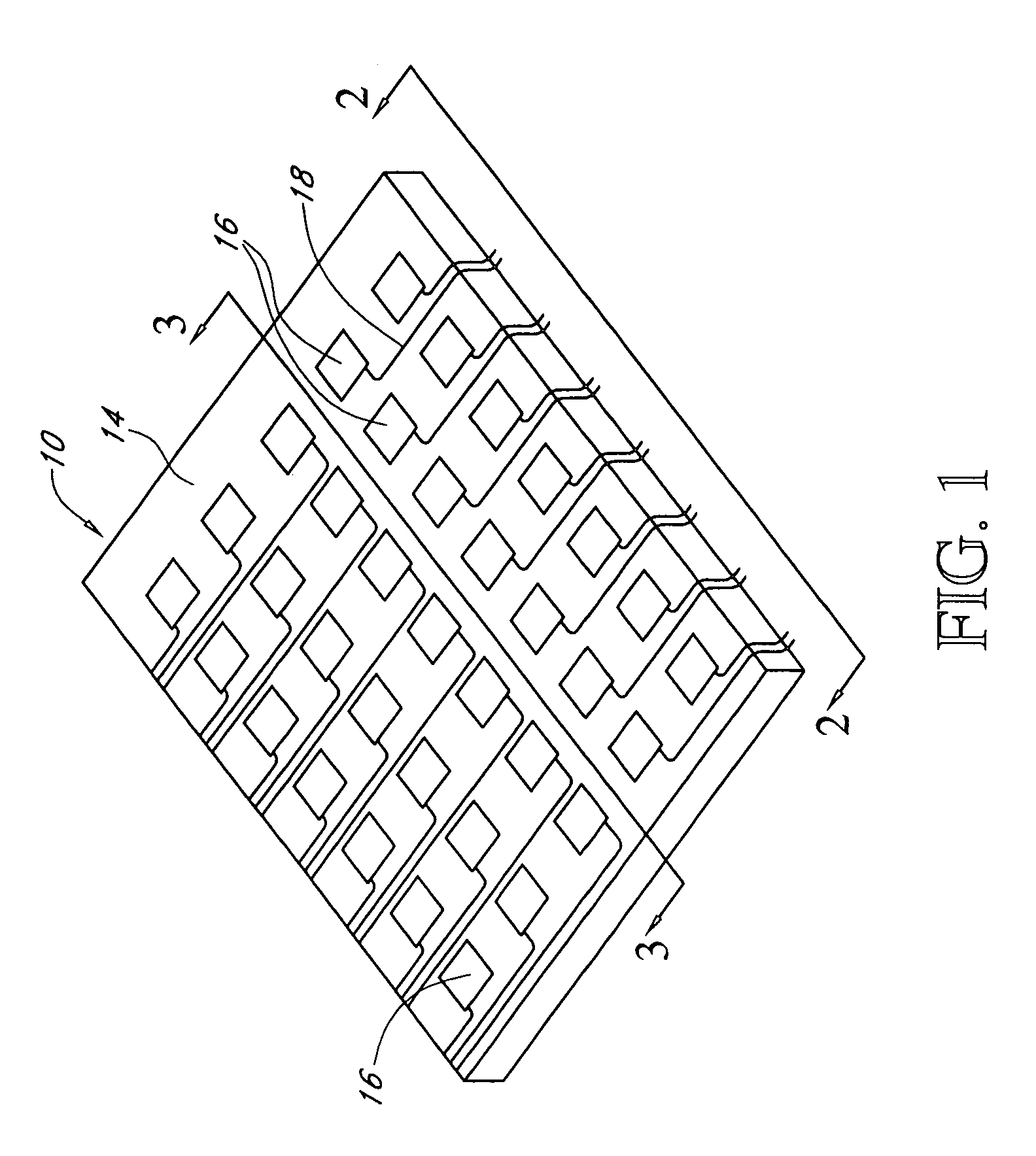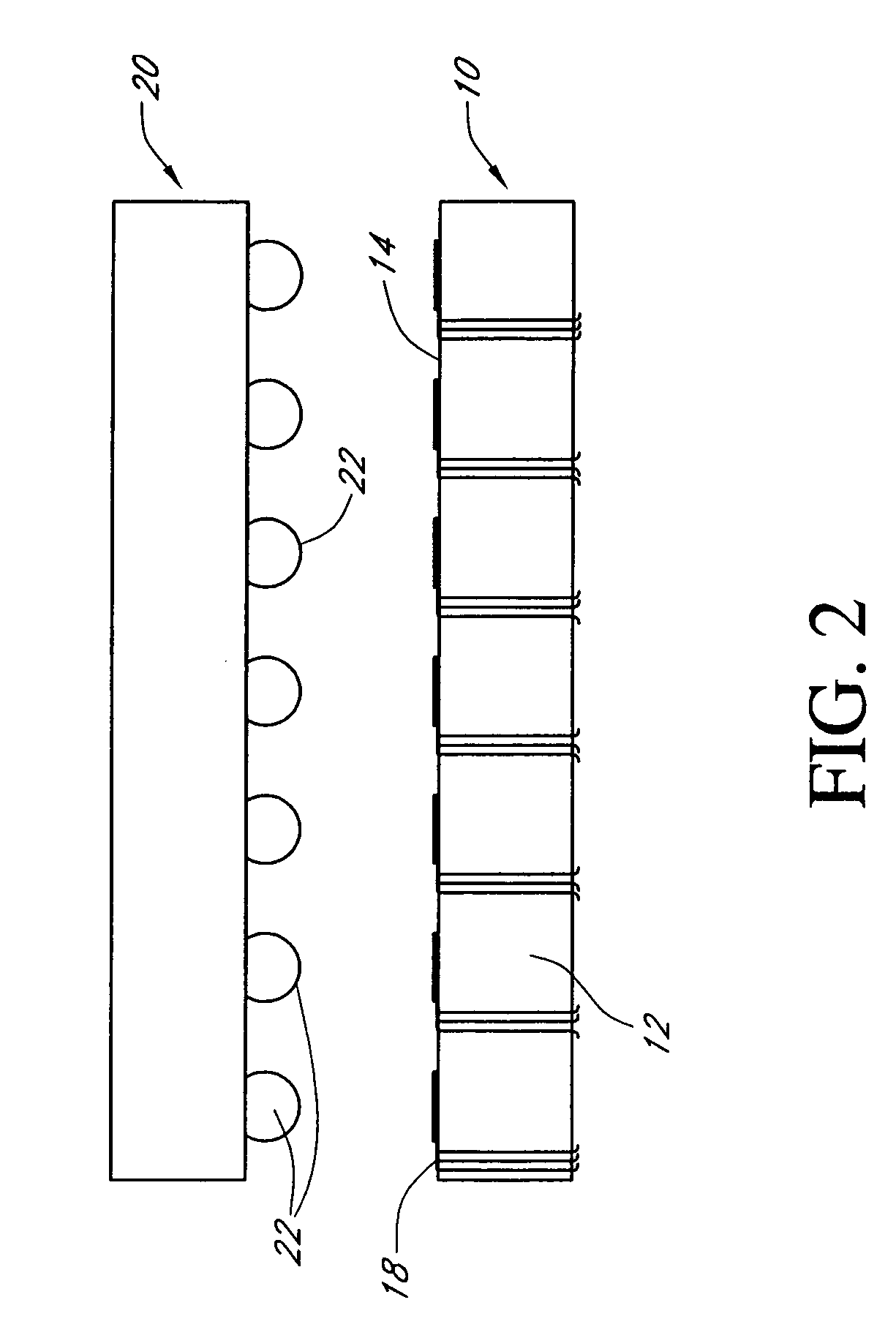Air socket for testing integrated circuits
a technology of integrated circuits and air sockets, which is applied in the field of testing of semiconductor devices, can solve the problems of inability to temporarily electrically connect, the terminals of electronic components are not co-planar, and the contact bumps on the flip-chips are not usually uniform sizes, so as to improve the probability of a successful chip test, improve manufacturing efficiency and quality control, and improve the electrical connection
- Summary
- Abstract
- Description
- Claims
- Application Information
AI Technical Summary
Benefits of technology
Problems solved by technology
Method used
Image
Examples
Embodiment Construction
[0026]Broadly stated, FIG. 1 shows an overview of an embodiment of an adjustable membrane test device for a semiconductor. FIG. 1 is a perspective view of a socket 10 of a preferred embodiment of the invention. The socket 10 consists of a housing 12 with a recess (not shown) covered on at least one side with a flexible membrane 14 to form a chamber (not shown) in the housing 12. The housing 12 is rigidly designed to provide the support for the attached flexible membrane 14. The flexible membrane 14 is made from a non-conductive material and creates an adjustable surface.
[0027]A plurality of contact members 16 are attached to that surface of the flexible membrane 14 which faces the electrical device under test. The plurality of contact members 16 may take the form of individual planar surfaces such as those shown or, alternatively, concave surfaces, convex surfaces, linear protrusions such as piercing contacts, dendrite protrusions or other geometric structures configured to make ind...
PUM
| Property | Measurement | Unit |
|---|---|---|
| temperatures | aaaaa | aaaaa |
| flexible | aaaaa | aaaaa |
| depth | aaaaa | aaaaa |
Abstract
Description
Claims
Application Information
 Login to View More
Login to View More - R&D
- Intellectual Property
- Life Sciences
- Materials
- Tech Scout
- Unparalleled Data Quality
- Higher Quality Content
- 60% Fewer Hallucinations
Browse by: Latest US Patents, China's latest patents, Technical Efficacy Thesaurus, Application Domain, Technology Topic, Popular Technical Reports.
© 2025 PatSnap. All rights reserved.Legal|Privacy policy|Modern Slavery Act Transparency Statement|Sitemap|About US| Contact US: help@patsnap.com



